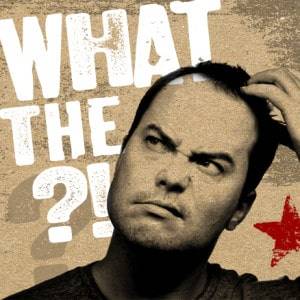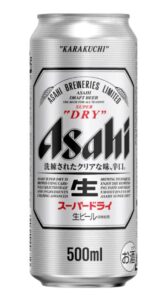 American Craft Beer’s “What the Hell” series is all about a beer’s backstory, conceived to save all of us from the embarrassment of not knowing exactly what we’ve decided to put in our mouths.
American Craft Beer’s “What the Hell” series is all about a beer’s backstory, conceived to save all of us from the embarrassment of not knowing exactly what we’ve decided to put in our mouths.
So welcome to the latest in our ongoing series (drum roll please…) “What the Hell is a Dry Beer?
So let’s start with the basics…
A “dry beer” does sound like a bit of a contradiction. But it’s not about wetness or liquidity (0r lack of it), and it’s more about a beer’s character than an actual beer style.
A pale ale is a beer style a dry beer is a beer trait.
Tasting Table correctly points out that “the defining characteristic of any beer that’s classified as ‘dry’ is that it lacks residual sugar. This means that similar to dry wine, dry beer isn’t sweet. In contrast, it tends to have a crisp flavor that’s marked by a vibrant degree of acidity.”
Dry beers don’t linger on the tongue, they disappear. They also tend to have a more effervescent quality that keeps things bight and refreshing.
 And yes, the concept of a dry beer has been around for eons, but it shot to the forefront in 1987 with the debut in Japan of Asahi Super Dry. That beer’s unique “dryness” caught on it a big way forcing Japanese brewers including Kirin Brewery, Sapporo Breweries, and Suntory to quickly introduce their own beer variations, lest they be left in the dust.
And yes, the concept of a dry beer has been around for eons, but it shot to the forefront in 1987 with the debut in Japan of Asahi Super Dry. That beer’s unique “dryness” caught on it a big way forcing Japanese brewers including Kirin Brewery, Sapporo Breweries, and Suntory to quickly introduce their own beer variations, lest they be left in the dust.
In the late 1990s and early 2000s big brewers in the US also produced what they called “dry beers,” but the phenomenon never caught on like it did in Asia. But with the resurgence of craft brewers exploring lagers in 2024, we expect the “dry beer’’ concept to enjoy its own independent renaissance.
###
Got more beer questions?
We’ve got answers…
WHAT THE HELL IS A SKUNKY BEER?
WHAT THE HELL IS THE BREWING PROCESS?
WHAT THE HELL IS ISINGLASS AND WHY IS IT IN MY BEER?
###
 American Craft Beer The Best Craft Beer, Breweries, Bars, Brewpubs, Beer Stores, And Restaurants Serving Serious Beer.
American Craft Beer The Best Craft Beer, Breweries, Bars, Brewpubs, Beer Stores, And Restaurants Serving Serious Beer.
